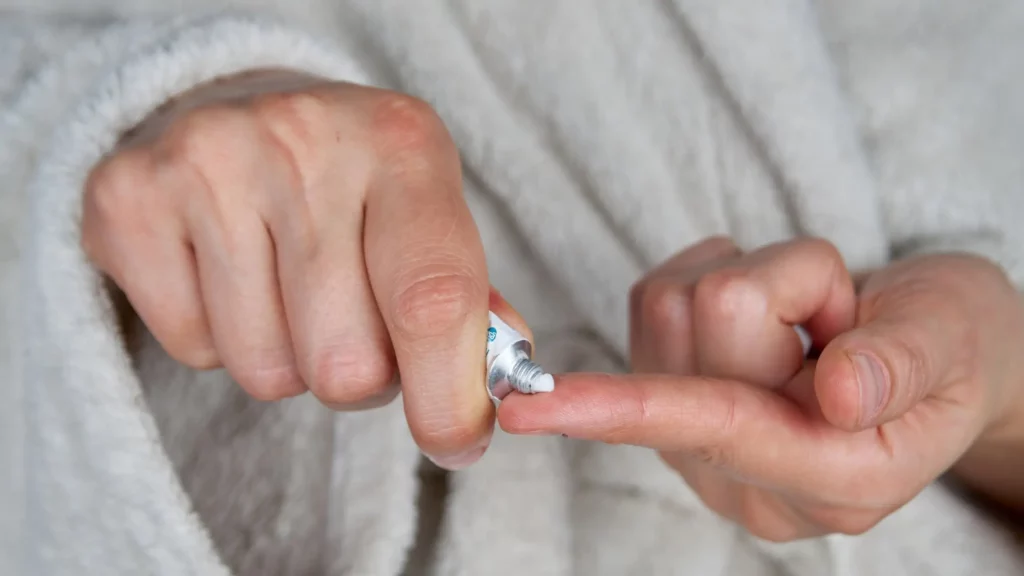Experiencing unusual sensations like tingling or numbness during menopause can be unsettling. These sensations, known as paresthesia, often accompany hormonal changes. Understanding how paresthesia and menopause are connected is essential. This article focuses on “Paresthesia Menopause Treatment,” guiding you through accessible ways to alleviate these sensations.
The discomfort paresthesia brings can impact daily life, making it crucial to explore effective treatments. As women go through menopause, their bodies undergo significant transformations, and being well-prepared for possible challenges is important. By learning about the options available, you can take proactive steps towards a more comfortable menopausal journey.
Understanding Menopause and Paresthesia
Menopause marks a natural phase in a woman’s life when her reproductive system undergoes significant changes.
Typically occurring between the ages of 45 and 55, menopause signifies the end of the menstrual cycle and a decrease in hormone production, specifically estrogen.
What is Paresthesia?
Paresthesia is a term that describes abnormal sensations in the body, such as tingling, burning, or numbness.
During menopause, hormonal fluctuations, particularly the decline in estrogen levels, can affect nerve function.
This can result in women experiencing paresthesia in various parts of their bodies, often in the hands, feet, arms, and legs.
Hormonal Connection to Paresthesia
Estrogen plays a crucial role in maintaining nerve health and function. When estrogen levels decrease, nerve endings may become more sensitive, leading to the sensations associated with paresthesia.
Fluctuating hormones during menopause can trigger these sensations, causing discomfort and impacting daily activities.

Identifying Paresthesia During Menopause
It’s important to recognize the symptoms of paresthesia during menopause. Women might describe a “pins and needles” sensation, a feeling of “crawling” on the skin, or moments of temporary numbness.
These sensations can vary in intensity and frequency, and they often occur without any visible signs on the skin.
Impact on Quality of Life
Paresthesia can significantly affect a woman’s quality of life during an already transformative phase.
Sleep disturbances due to uncomfortable sensations and potential disruption of daily routines can lead to frustration and discomfort.
Understanding the connection between menopause and paresthesia is the first step in finding effective ways to manage and alleviate these symptoms.
Read Also: How Long Does Menopause Last After Total Hysterectomy?
Paresthesia Menopause Treatment
Experiencing paresthesia during menopause can be distressing, but there are effective treatments available to alleviate these sensations and improve your overall comfort. Here’s a detailed look at various treatment approaches:
Lifestyle Adjustments for Relief
- Balanced Diet: Incorporating a diet rich in essential nutrients, such as vitamins and minerals, can support nerve health. Include foods like whole grains, fruits, vegetables, and lean proteins to provide the necessary building blocks for nerve function.
- Regular Exercise: Engaging in physical activity boosts circulation and promotes nerve health. Activities like walking, swimming, and yoga can help alleviate paresthesia symptoms by enhancing blood flow and reducing nerve sensitivity.
- Stress Management: Techniques like deep breathing, meditation, and progressive muscle relaxation can help reduce stress. Managing stress is essential, as high-stress levels can exacerbate paresthesia symptoms.
Home Remedies for Comfort
- Warm Compresses and Massages: Applying warm compresses to the affected areas can provide relief from discomfort. Gentle massages can also help improve blood circulation and reduce nerve-related sensations.
- Topical Creams and Ointments: Over-the-counter topical creams containing ingredients like menthol or capsaicin can offer temporary relief from paresthesia. These creams work by creating a soothing sensation on the skin.
- Vitamin Supplements and Herbal Remedies: Some women find relief from paresthesia by taking vitamin supplements such as B vitamins, which are known to support nerve health. Herbal remedies like evening primrose oil or St. John’s wort may also provide relief, but it’s important to consult a healthcare professional before using any supplements.

Medical Interventions for Targeted Relief
Hormone Therapy: Hormone replacement therapy (HRT) involves taking medications to restore hormone levels, particularly estrogen. This can help alleviate paresthesia symptoms caused by hormonal imbalances during menopause.
Medications for Nerve-Related Symptoms: Certain medications, such as anticonvulsants or antidepressants, can be prescribed to manage nerve-related symptoms. These medications work by modulating nerve signals and reducing the sensations of paresthesia.
Consultation with Healthcare Professionals: Seeking guidance from healthcare providers is crucial in determining the most appropriate treatment plan for your specific symptoms. A healthcare professional can evaluate your condition, provide tailored recommendations, and monitor your progress.
Preventive Measures
As you navigate through the menopausal journey and manage paresthesia, there are proactive steps you can take to prevent worsening symptoms and maintain your well-being. Here’s an in-depth exploration of preventive measures:
Early Detection and Timely Action
Awareness of Symptoms: Familiarize yourself with the signs of paresthesia, such as tingling, burning, or numbness. Being attuned to these sensations can help you identify them early and take appropriate action.
Regular Self-Assessment: Periodically assess the frequency and intensity of paresthesia symptoms. Keeping track of changes will enable you to communicate effectively with your healthcare provider.
Regular Check-Ups with a Healthcare Provider
- Routine Visits: Schedule regular check-ups with your healthcare provider, especially if you’re experiencing paresthesia during menopause. Regular consultations allow your provider to monitor your overall health and address any concerns.
- Open Communication: During appointments, openly discuss your symptoms, their impact on your daily life, and any treatments you’re considering. Your healthcare provider can offer valuable insights and tailor recommendations to your specific needs.
Read Also: How to Boost Immune System during Menopause?
Comprehensive Symptom Management
- Holistic Approach: Recognize that managing paresthesia is just one aspect of your menopausal experience. Address other symptoms like hot flashes, mood changes, and sleep disturbances to enhance your overall well-being.
- Lifestyle Modifications: Continue to prioritize a balanced diet, regular exercise, and stress management techniques. These practices not only aid in managing paresthesia but also contribute to a healthier menopausal transition.
Proactive Mindset for Long-Term Well-Being
- Consistency in Treatment: If you’ve found a treatment plan that works for you, stick to it consistently. It may take time to see significant improvements, but following the recommended approach can yield positive results.
- Seeking Guidance: If symptoms change or worsen, don’t hesitate to reach out to your healthcare provider for guidance. Adjustments to your treatment plan might be necessary as your body continues to adapt to hormonal changes.
Conclusion
In the realm of menopause, the presence of paresthesia demands attention as part of a comprehensive approach to well-being.
As hormonal shifts unfold, understanding the link between paresthesia and menopause empowers women to seek effective treatment strategies.
By embracing lifestyle adjustments, exploring home remedies, considering medical interventions, and staying attuned to preventive measures, individuals can manage and alleviate paresthesia symptoms for a smoother transition.
It’s essential to remember that no two menopausal experiences are identical. By working closely with healthcare professionals, women can tailor their treatment plans to suit their specific needs.
Navigating this phase requires patience, persistence, and a proactive mindset. Through these efforts, women can continue to lead fulfilling lives while successfully managing paresthesia and its impact.
FAQs (Frequently Asked Questions)
Q1: Can menopause really cause paresthesia?
A: Yes, the hormonal changes that occur during menopause, particularly the decline in estrogen levels, can affect nerve function and lead to paresthesia.
Q2: Are there any natural remedies I can try at home?
A: Yes, warm compresses, gentle massages, and certain herbal remedies may provide relief. However, consult a healthcare provider before using any herbal remedies.
Q3: What is hormone therapy, and can it help with paresthesia?
A: Hormone therapy involves taking medications to restore hormone levels, which can alleviate paresthesia symptoms caused by hormonal imbalances during menopause.
Q4: Can lifestyle changes make a difference in managing paresthesia?
A: Absolutely. A balanced diet, regular exercise, and stress management techniques can support nerve health and help manage paresthesia symptoms.
Q5: Is paresthesia permanent, or can it be treated effectively?
A: Paresthesia symptoms can often be managed and alleviated through various treatment approaches. Consistency in treatment and early intervention are key factors.
Q6: When should I seek medical attention for paresthesia during menopause?
A: If paresthesia symptoms are causing significant discomfort, interfering with daily activities, or worsening over time, consult a healthcare provider.
Q7: Are there any potential side effects of medications used to treat paresthesia?
A: Like any medications, those used for paresthesia may have potential side effects. Your healthcare provider will discuss the benefits and risks of any treatment.
Q8: Can paresthesia indicate a more serious underlying condition?
A: While paresthesia is often related to menopause, it’s important to rule out other underlying conditions. Consultation with a healthcare provider can help determine the cause.
Q9: Is paresthesia a common symptom of menopause?
A: Paresthesia is not as common as some other menopausal symptoms, but it can occur due to hormonal changes. Consulting a healthcare provider can provide clarity.
References
- Mayo Clinic. (2021). Menopause. https://www.mayoclinic.org/diseases-conditions/menopause
- National Institute on Aging. (2020). Menopause. https://www.nia.nih.gov/health/menopause
- Harvard Health Publishing. (2021). Nerve Pain and Numbness. https://www.health.harvard.edu/pain/nerve-pain-and-numbness



